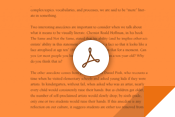
Improving drug management with an automated dispensing system
Fundació Sanitária Mollet (FSM - Mollet Healthcare Foundation) has opted to optimize drug distribution by implementing an automated dispensing system. This consists of placing smart medicine cabinets at different points of the hospital where medication is administered to patients and of replacing the process of generating and transporting unit dosage drug trolleys from the Pharmacy unit.
Description
The implementation of a semi-automated drug dispensing system (ADS) has replaced unit dosage dispensing technology for supplying satellite pharmacies in hospital inpatient areas, and in emergency, semi-critical care and surgical units.
This approach is aligned with the strategy of Fundació Sanitaria Mollet to encourage excellence in processes and, particularly, in organizational reliability in which patient safety is paramount. Likewise, the innovation involved in introducing decentralized automated dispensing technology is part of the foundation’s business strategy.
Both the challenge raised by the project and its differential value lie in replacing the process of generating the 24-hour unit dosage trolley from Pharmacy, as it was most commonly used in emergency and intensive care units to replace large stocks of medicine in these units, but not to replace the unit dosage trolley generated at Pharmacy and prepared for administration to patients.
Performance of the project was based on the following plan:
1. External and internal analysis, which included: review of the 2021-2025 Strategic Plan and preparation of PESTEL and SWOT analyses to assess the positioning and competitive advantages derived from the FSM project for the coming years. Review of the business blueprint (BBP) document on the functional analysis of the project to implement the SAP Medication module at FSM. Meetings with the Head of Pharmacy and Supervisors from Nursing to map the “AS IS” scenario, which reflects the situation prior to the implementation of the ADS, and the “TO BE” scenario, after implementation of the dispensing process.
2. The timeline was established with consideration for: documentation determined with Palex, both for the strategic agreement of the pilot trial and the contract offer. Review of Steering Committee agreements.
3. Design of the strategy to manage change: meetings with Nursing supervisors, Head of Nursing and Head of Pharmacy. Review of publications on the implementation of similar ADS affecting nursing circuits.
4. Definition of indicators and user satisfaction survey: meetings with the Head of Management and the Head of Pharmacy to agree upon which indicators should be compared, and upon the time intervals and the hospitalization units involved. Meetings with the Head of Nursing and ward supervisors to establish the content of user satisfaction surveys. Working sessions with the IT systems team to develop the SAP system data mining programs.
5. Data collection and drawing of conclusions: review of the literature by searching and selecting relevant studies from projects to implement similar ADS . Use of the data provided by data mining programs, according to the criteria defined and established at previous meetings. Delivery and collection of data from user satisfaction surveys, through the training sessions on implementing the ADS (pre-implementation phase) and by email (post-implementation phase). Meetings to review and analyse data collected with the Head of Pharmacy, the Head of Management and the Head of Nursing.
The project led to identification of key success factors. These helped to overcome resistance to change:
• Benchmark. Visits to hospitals with ADS in operation, to observe the process onsite and share the experience with the nurses.
• Strategic agreement with Palex to run a pilot trial at no cost for FSM.
• Leadership of the Head of Nursing and Ward Supervisors.
• Leadership and assumption of training by the Head of Pharmacy.
With the implementation of the ADS, the drug dispensing system was greatly simplified. There was no longer any need for an orderly while the nurses’ process was no longer dependent on the Pharmacy process. This has yielded many benefits. In the new scenario, nursing has become self-sufficient, as dispensing drugs is no longer the job of the Pharmacy, but rather of the ADS, and takes place in the ward itself where nurses provide patient care. Pharmacy must ensure that cabinets are well stocked with medication, through daily replenishment based on the lists generated by the system. Most importantly, however, Pharmacy technicians are not required to stock a medication trolley to arrive in time to administer the 4 pm doses and may replenish stocks at times when there is little medication-related nursing activity. This means fewer errors. In addition, the task of replenishment is used to control the inventory and drug expiry dates, a process that was not hitherto performed.
The project to automate drug dispensing at FSM is a strategic digital transformation project within the organization that covers different areas of care (hospitalization, emergency, operating theatres and day hospital/haemodialysis).
The initiative is innovative because of the benefits of automatizing the process, which can be summed up as:
• Medication available at all times every day of the year, with treatment up-to-date.
• Nurses spend less time dealing with Pharmacy, both regarding urgent requests and incidents with the unit dosage trolley. They can therefore devote this time to patients.
• Nurses spend less time managing stocks and narcotics.
• Technicians spend considerably less time replenishing the ADS than they did preparing the trolleys • There is less tension between Pharmacy and Nursing staff.
• Trolley returns need not be managed by Pharmacy.
• Drugs past their expiration date are controlled.
• Reduced risk of replenishment errors compared to possible dispensing errors with the manual trolley process.
• Organization and optimization of space for nursing controls by eliminating stocks in the drug cabinet.
• Reduction of drug inventories in clinical units.
• Access to drugs only by authorized nurses using the ADS biometric system.
• Anticipation of stock-outs because of the backup stock of medication stored in the ADS.
• Total control of the drug inventory by Pharmacy.
This good practice has shown that the implementation of automated drug dispensing units at Fundació Sanitaria Mollet was a good decision both from an economic and operational perspective. Economically, data from the system point to savings in drug consumption after implementing the automated cabinets. Operationally, it allows FSM to view optimization of the process, and eliminates time spent by professionals on manual and management tasks, which yielded no value.
Needs
• To reduce the cost and time invested in the manual process of drug dispensation.
• To provide access to medication at the right time and place.
• To enhance patient safety and reduce nursing time spent on administrative tasks.
Results
Time optimisation. After the implementation of the ADS, 54 nursing hours per month were freed up (84.4% reduction in time spent by nurses on drug management), which can now be devoted to direct patient care, as were 106 pharmacy technician hours (58.5% reduction).
Employee satisfaction . 99% satisfaction of nursing professionals.
Reduction in costs. 16% reduction in overall drug consumption in hospitalization units. 87% reduction in medication returned to the pharmacy.
Greater efficiency. Comparison of the two pre- and post-implementation periods shows that drug consumption in inpatient units fell by 17,388 units (-9%) and expenditure on drugs was reduced by 17.8%. The cost of drugs per stay decreased from €14.28 to €11.92 (-16.5%).
Files
Year
2021
Price
Unspecified
Team
Comments
The results obtained show that investment in technology is required to generate organizations that can aspire to reliability and zero defects by transforming their processes and making them more robust.
At the heart of this good practice lies the lesson that quality is not at odds with lower costs, and that errors in drug management can lead to serious incidents in patient safety.
It is therefore imperative to weigh the costs of investment in technology against the reduction or elimination of the cost of the deficient quality involved in maintaining weaker systems. Although there was some initial resistance from nursing staff to the new system, this was later clearly reversed and evolved into a high rate of satisfaction and perceived confidence in and safety of the process.
Published on*** 22 Jun 2022





















